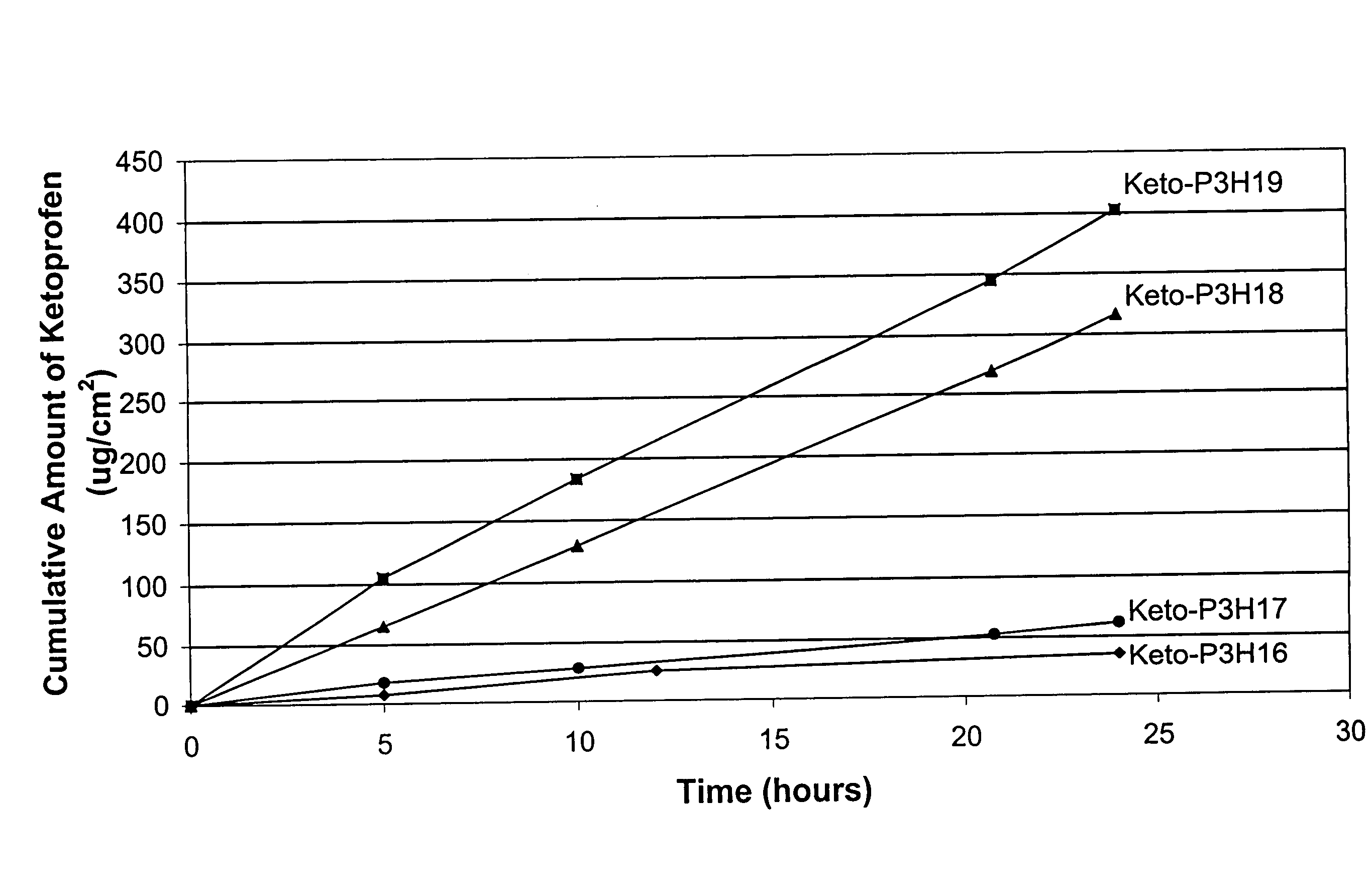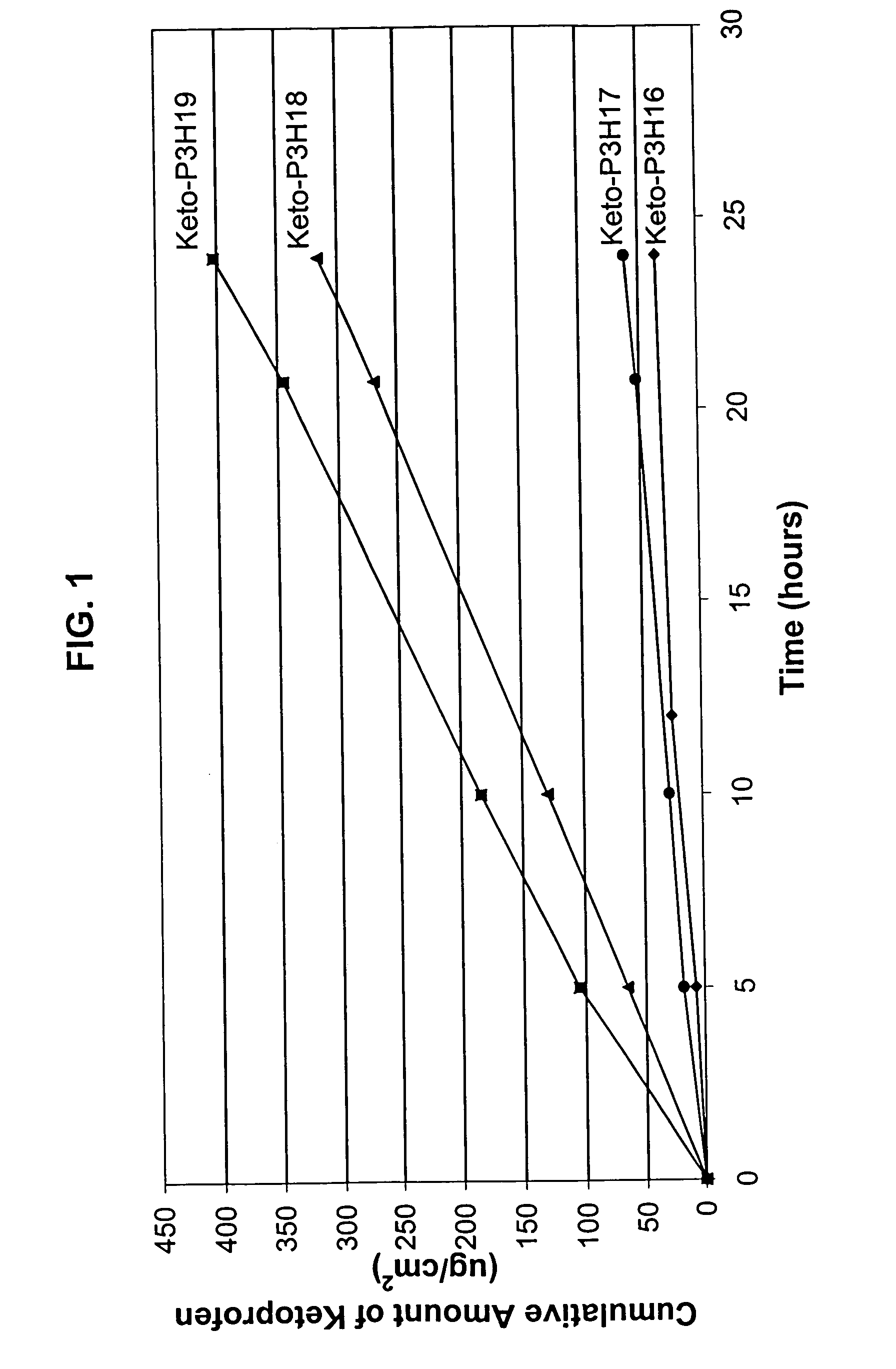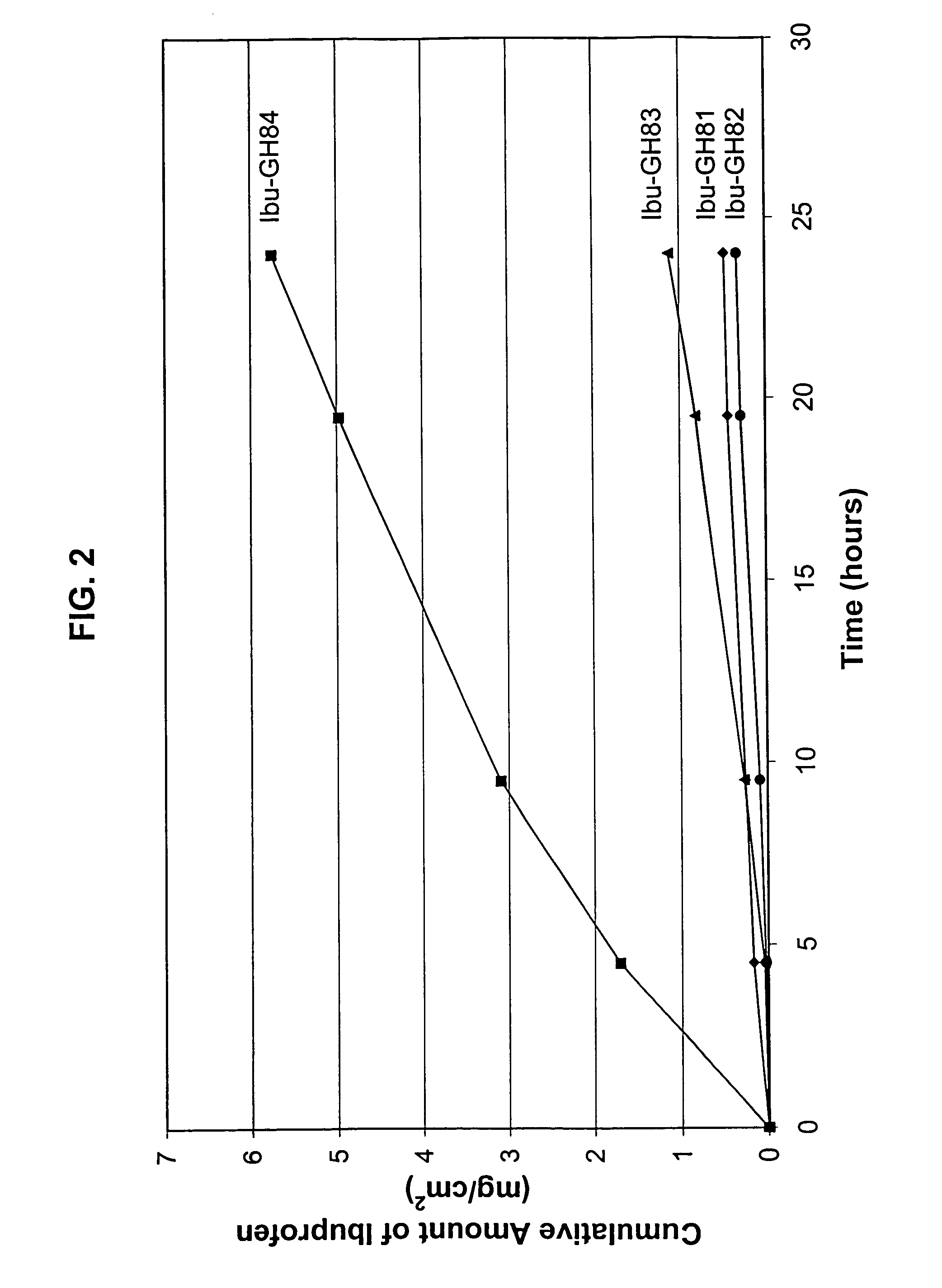Transdermal administration of nonsteroidal anti-inflammatory drugs using hydroxide-releasing agents as permeation enhancers
- Summary
- Abstract
- Description
- Claims
- Application Information
AI Technical Summary
Benefits of technology
Problems solved by technology
Method used
Image
Examples
example 1
[0081]An in vitro skin permeation study was conducted using four ketoprofen transdermal systems. The formulations used to prepare these systems are listed in Table 1, which includes weight and weight percent of each component of the formulations. The weight of sodium hydroxide was 0 g, 0.19 g, 0.215 g, and 0.225 g for formulation #Keto-P3H16, -P3H17, -P3H18, and -P3H19, respectively. Each formulation was coated on a release liner and dried in an oven at 55° C. for two hours to remove water and other solvents. The dried drug-in-adhesive / release liner film was laminated to a backing film. The backing / drug-in-adhesive / release liner laminate was then cut into discs with a diameter of 11 / 16 inch. The theoretical percent weight for each ingredient after drying (calculated assuming all volatile ingredients were completely removed during drying) is set forth in Table 2.
[0082]The in vitro permeation of ketoprofen through human cadaver skin from these discs was performed using Franz diffusion...
example 2
[0092]A human skin irritation study was performed using seven transdermal systems, which are listed below.[0093]Patch #Keto-IT1 (containing no ketoprofen, no NaOH)[0094]Patch #Keto-IT2 (containing ketoprofen, no NaOH)[0095]Patch #Keto-IT7[0096]Patch #Keto-IT8[0097]Patch #Keto-IT9[0098]Patch #Keto-IT10[0099]Patch containing petrolatum
[0100]The patch containing petrolatum was used as a control, which was an occlusive chamber (Hilltop, Cincinnati, Ohio) containing petrolatum held in place with paper tape. The following procedures were used to prepare the systems with the exception of the system containing petrolatum. The formulations used to prepare these systems are listed in Table 4, which include weight and weight percent of each component in the formulations. The weight of sodium hydroxide was 0.6 g, 0.65 g, 0.69 g, and 0.73 g for formulation #Keto-IT7, -IT8, -IT9 and -IT10 respectively. Each formulation was coated onto a release liner and dried in an oven at 55° C. for two hours t...
example 3
[0117]An in vitro skin permeation study was conducted using four ibuprofen transdermal gels. The formulations used to prepare these gels are listed in Table 7, which includes weight and weight percent of each component in the formulations. The weight of sodium hydroxide was 0 g, 0.115 g, 0.135 g, and 0.15 g for formulation #Ibu-GH81, -GH82, -GH83, and -GH84 respectively.
[0118]The in vitro permeation of ibuprofen through human cadaver skin from these gels was performed using Franz diffusion cells with a diffusion area of 1 cm2. Human cadaver skin was cut to a proper size and clamped between the donor and receiver chambers of the diffusion cell with the stratum corneum side facing the donor solution. Three diffusion cells were used for each formulation.
[0119]Normal saline was used as the receiver solution. The volume of receiver solution was 8 ml. The entire receiver solution was collected and replaced with fresh saline at each time point. The receiver solution collected was analyzed ...
PUM
| Property | Measurement | Unit |
|---|---|---|
| Area | aaaaa | aaaaa |
| Mass | aaaaa | aaaaa |
| Mass | aaaaa | aaaaa |
Abstract
Description
Claims
Application Information
 Login to View More
Login to View More - R&D
- Intellectual Property
- Life Sciences
- Materials
- Tech Scout
- Unparalleled Data Quality
- Higher Quality Content
- 60% Fewer Hallucinations
Browse by: Latest US Patents, China's latest patents, Technical Efficacy Thesaurus, Application Domain, Technology Topic, Popular Technical Reports.
© 2025 PatSnap. All rights reserved.Legal|Privacy policy|Modern Slavery Act Transparency Statement|Sitemap|About US| Contact US: help@patsnap.com



